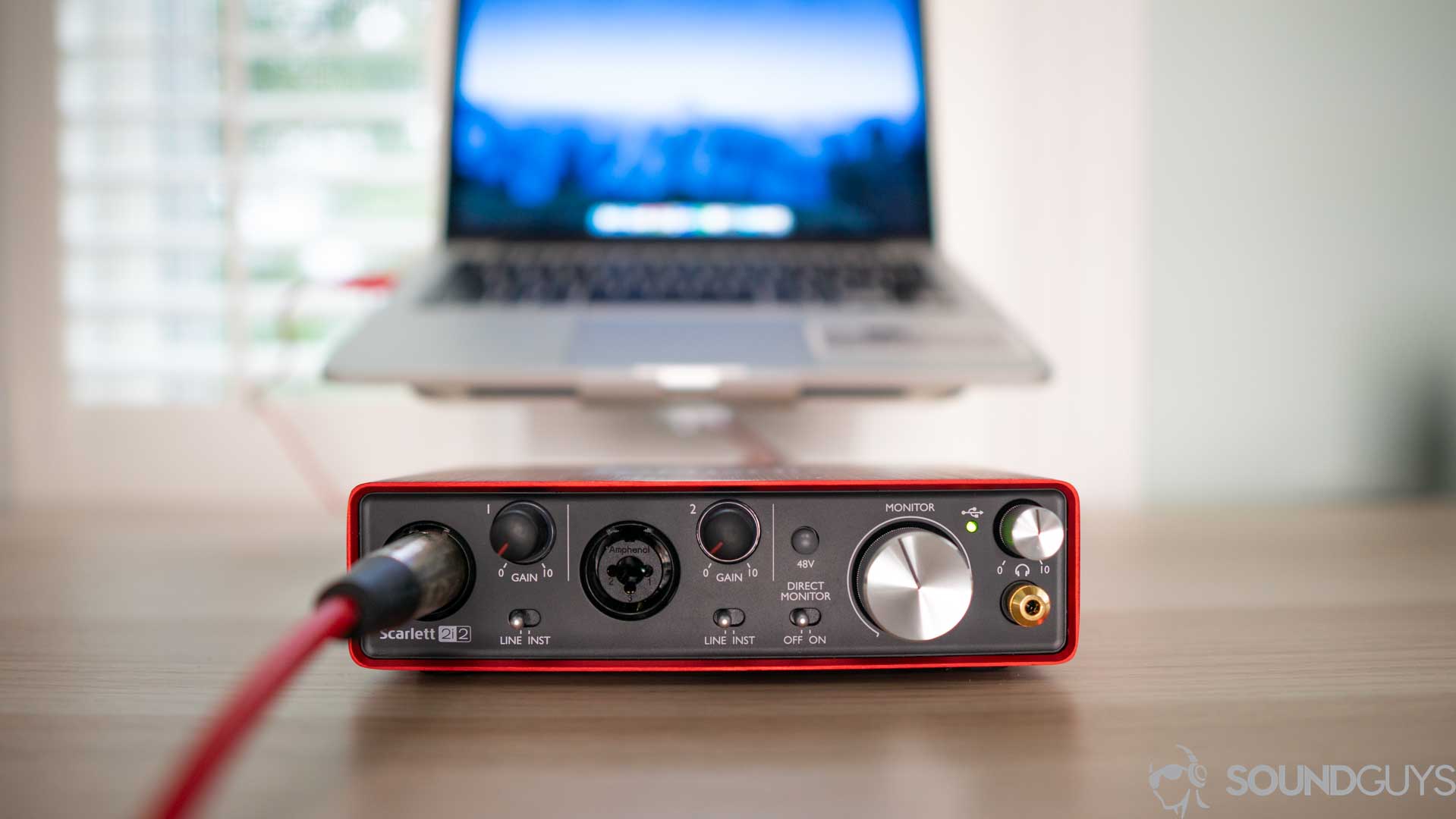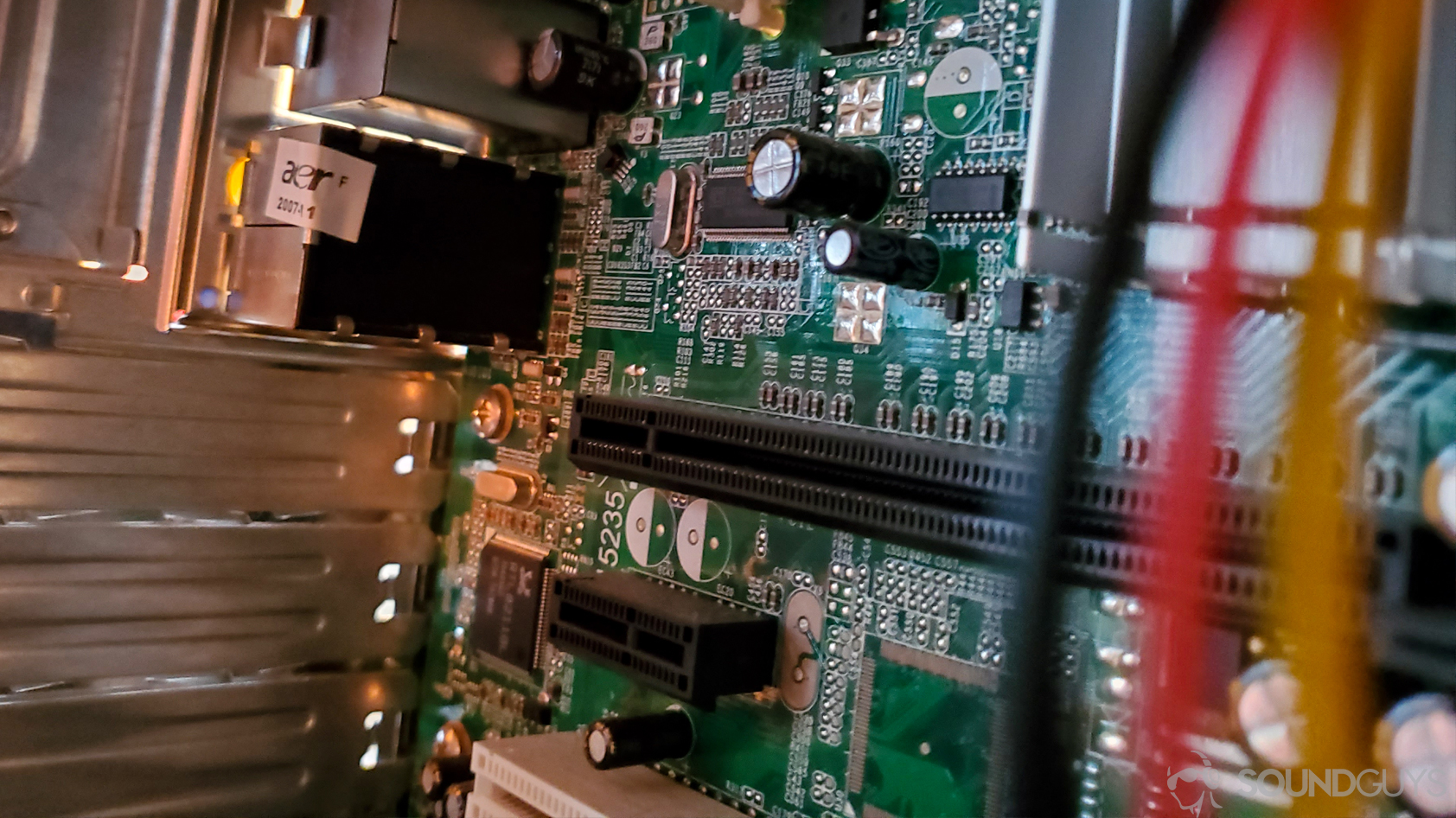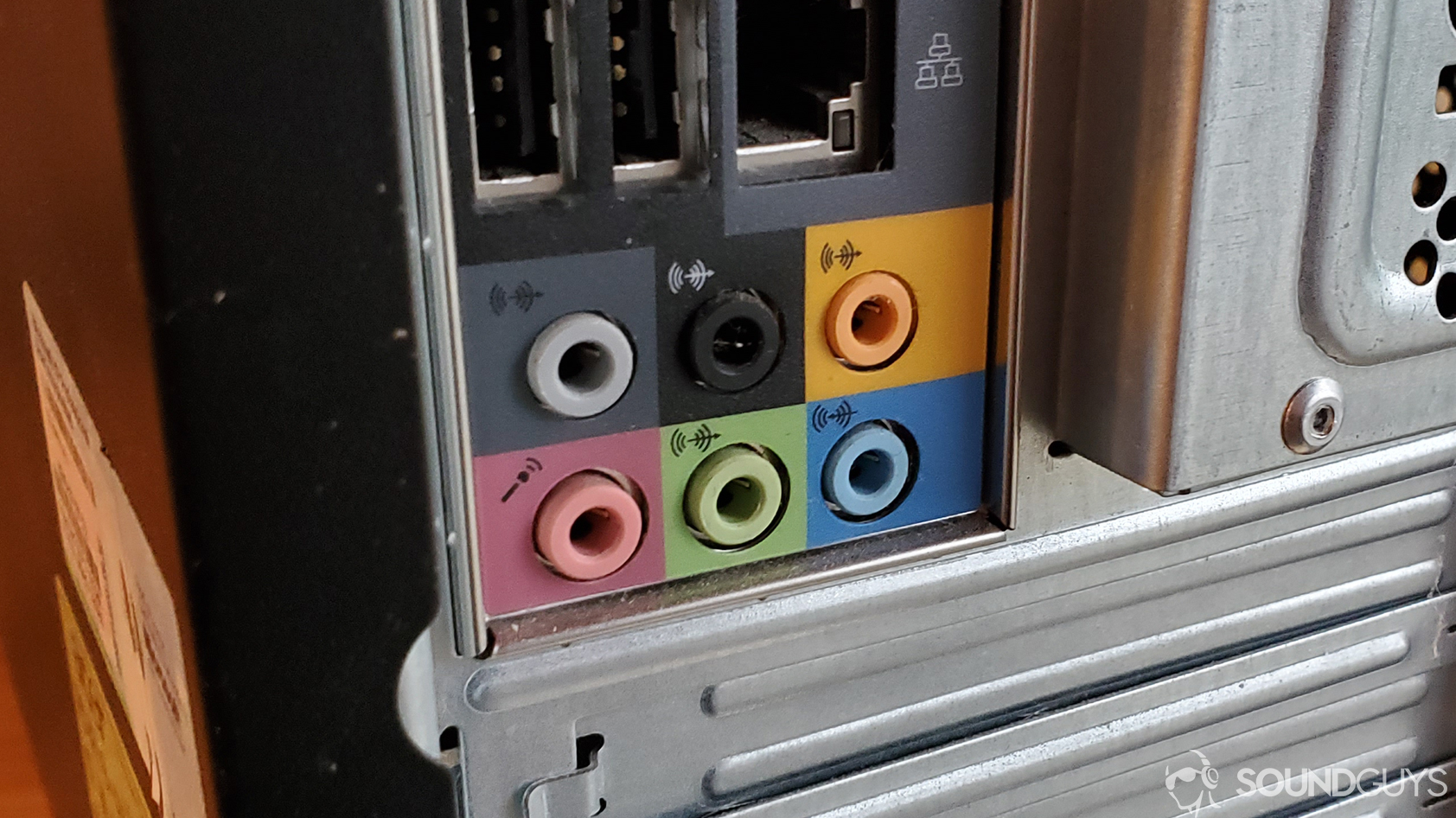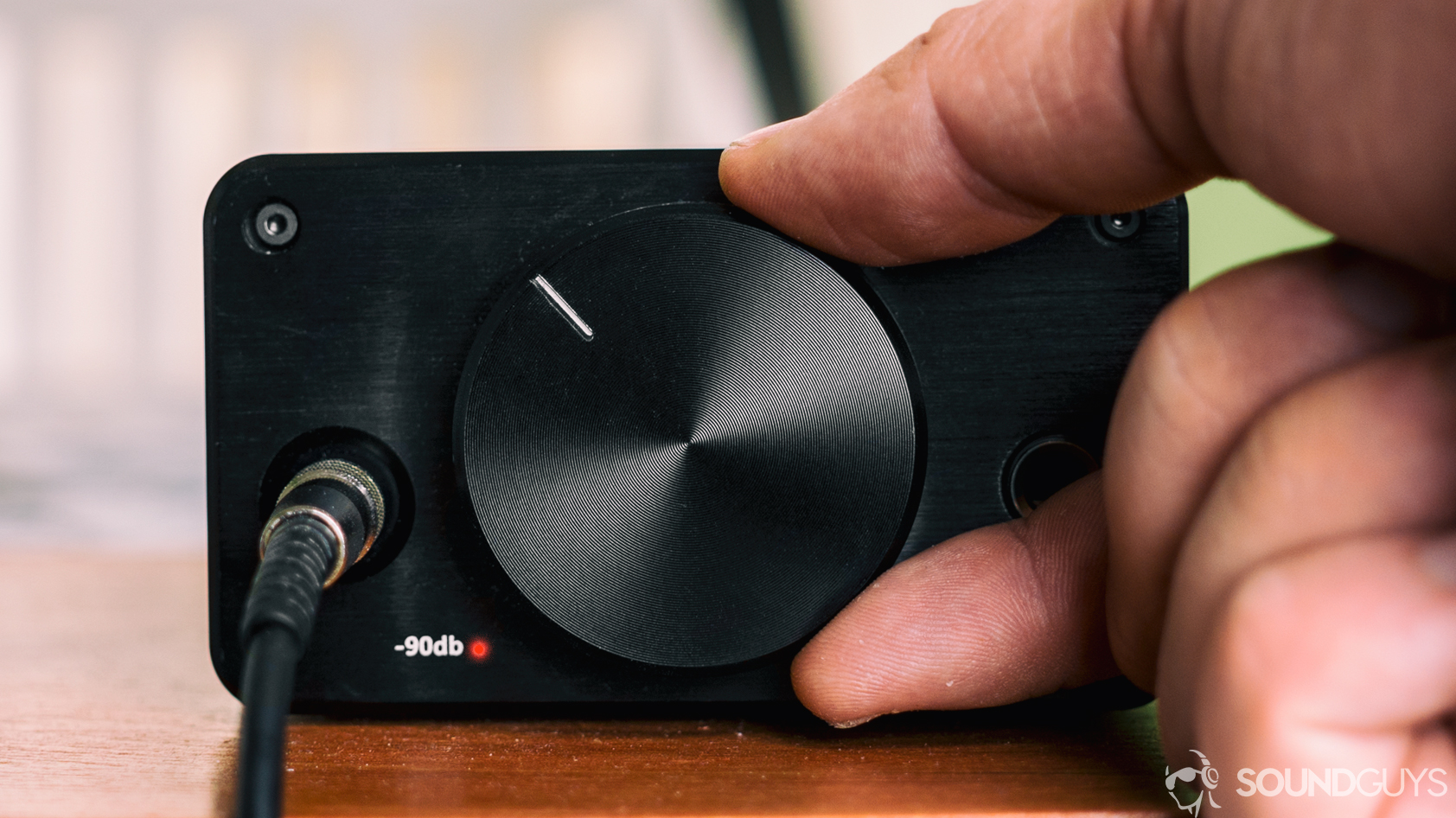All products featured are independently chosen by us. However, SoundGuys may receive a commission on orders placed through its retail links. See our ethics statement.
What is a sound card?
Published onNovember 15, 2024
If you’re looking to improve your PC’s audio or build one from scratch, you’re probably wondering if you need to buy a sound card. Fortunately for you, the age where this was a necessary buy for a PC is long gone, but there are still some situations where you may want to consider buying one. Let’s go over them quickly.
Editor’s note: this article was updated on November 15, 2024, to fix formatting, word choice issues.
What does a sound card do?
A sound card is a computer component that translates digital audio signals to analog ones, and analog audio signals to digital ones. Technically, a sound card is an optional component but a necessary one if you want to hear sound from your PC on wired headphones or speakers (just like an external DAC), or plug in a mic with an analog output. These components are designed to take the specialized job of parsing signals into quality sound, a task that the computer’s CPU is not always the most ideal tool for.

Audio interfaces solve these problems too and have basically taken over from sound cards. Some people will even refer to them using the same terminology. Sound cards differ in that they are installed inside the computer case itself, rather than connected as an external peripheral. They are usually connected to the motherboard via a PCI or PCIe card slot. By using these connections, the card can interface with all the power and other contacts to connect to the motherboard: you can just drop the card in the slot, and screw the backplate into place.
In general, most computers will handle the sound card’s job with a basic integrated circuit on the motherboard. Laptops won’t house a separate sound card, as space is at a premium. But your trusty desktop PC might provide crackly sound or have difficulty supporting the standards you want with your music. When your computer’s audio is noticeably worse than, say, your phone’s — you want to get a sound card. Almost nobody will need to, but there are still circumstances where you’ll want one.
When should you buy a sound card?

While most default sound cards are perfectly adequate for casual use, there are still a few instances when you’ll want or need to upgrade.
Should you buy a soundcard if your music sounds bad?
Component-produced noise and a lack of shielding around the motherboard are almost always responsible for poor PC audio. A sound card sidesteps this issue by shielding internal components and creating distance away from the noisiest parts of your PC. Even a crappy sound card will usually offer a slight improvement over your motherboard’s noisy circuitry, if and only if you can audibly hear an issue with the stock setup. Nine times out of ten, though, a sound card isn’t something you need to buy for better audio.
Keep in mind too that if you’re listening to your music with wired headphones, the soundcard may not help you all that much if it doesn’t have a TRRS jack that you can reach with your cable. It’s why some models will add an external control module with a headphone jack, or have a satellite unit that has its own hardware to decode and amplify your tunes outside of your computer.
Will a new soundcard improve lossless audio quality?
Some ultra-cheap computers will simply not have an audio output at all. While it’s excessively rare nowadays, every so often there’s no way to listen to your music with a computer, or you’re limited to crappy Bluetooth. In this instance, you’ll want either a sound card or an external DAC and amplifier.
If you’re a collector of FLAC or lossless audio files, even some high-end motherboard-based audio chips won’t support playback at your collection’s native sample rate or bit depth. In that case, you’ll want a sound card to get your audio at optimal quality.
Should you get a soundcard when you need more ports?

Those of you with sick desktop setups with studio monitors, microphones, and headphones might need more inputs and outputs than your PC currently provides. In this case, sound cards will often allow you to add optical out, surround sound out, and more.
If you’re a music producer — or are looking into recording with your computer — we recommend getting a high-end sound card or audio interface to meet your needs. These units will typically have the hardware necessary to monitor output as well as record it, and it will have all the same capabilities of a headphone DAC and amp built in.
What do all those colored ports on the back do?
| Color | Shape | |
|---|---|---|
Optical | Color Black | Shape Square |
Headphone/line out | Color Green | Shape Round |
Microphone in | Color Pink | Shape Round |
Line in | Color Blue | Shape Round |
Digital out | Color Yellow/White | Shape Round |
Subwoofer out | Color Orange | Shape Round |
Rear surround sound | Color Black | Shape Round |
Center channel | Color Gray | Shape Round |
MIDI | Color Gold | Shape Rounded trapezoid |
Firewire | Color No color/metal | Shape Rectangle with rounded side |
Taking a peek at the back of your sound card can be a bit intimidating, especially if you’re trying to figure out where to plug in all those wires. Luckily, they’re all color-coded to avoid obvious problems. You will likely not need to use all of these ports, they’re there to meet the most demanding users.
When should you buy an external DAC and amplifier?

If you have a laptop or a compact computer unit, adding a PCI or PCIe-based sound card just isn’t in the… cards. In that case, you need an external unit. If you need analog inputs as well as outputs (for recording, streaming, or podcasting), you should look at audio interfaces. Or, you could get a USB mic and a DAC.
These usually connect to computers or phones via a USB cable (and before you ask: no, the cables don’t matter). The DAC will provide an analog output like a sound card, just outside of the computer. Before you leave the store, be sure to check to see if the DAC has a volume knob or buttons. You may also need to pick up an amplifier if the DAC unit doesn’t provide enough output for your speakers or headphones.
Frequently asked questions
Soundcard and audio interface are terms that can be used interchangeably. They do the same thing.
Probably! A cheap DAC/amp assembly is generally cheaper and easier to use with different computers over time (most connect with a normal USB cable), so they’ll last you longer as well.